KNG1
-
Official Full Name
Kininogen Heavy Chain -
Overview
Kininogens are inhibitors of thiol proteases. HMW Kininogen plays an important role in blood coagulation by helping to position optimally pre-Kallikrein and Factor XI next to Factor XII. HMW Kininogen inhibits the Thrombin- and Plasmin-induced aggregation of thrombocytes; the active peptide Bradykinin that is released from HMW Kininogen shows a variety of physiological effects: influence in smooth muscle contraction, induction of hypotension, natriuresis and diuresis and decrease in blood glucose level. It is also a mediator of inflammation and causes increase in vascular permeability, stimulation of nociceptors release of other mediators of inflammation (e.g. Prostaglandins) and it has a cardioprotective effect (directly via Bradykinin action, indirectly via endothelium-derived relaxing factor action). -
Synonyms
HMWK light chain;Kininogen 1;Kininogen 1 light chain;KNG;KNG1
Recombinant Proteins
- Human
- Mouse
- Zebrafish
- Rat
- Human Plasma
- HEK293
- Mammalian Cells
- E.coli
- Human Cells
- Mouse
- Yeast
- Wheat Germ
- In Vitro Cell Free System
- Non
- His
- GST
- T7
- DDK
- Myc
- Avi
- Fc
- Flag
Background
What is KNG1 Protein?
Kininogen-1 (KNG1) is a protein that's crucial for regulating blood pressure and controlling inflammation through its role as a precursor to kinins. Kinins are small peptides involved in expanding blood vessels and influencing inflammation, making KNG1 significant in conditions like cardiovascular diseases. This protein is also being studied for its role in diseases related to oxidative stress, including heart and brain conditions. Researchers are diving deeper into KNG1 because understanding how it works could lead to new treatments for these issues and improve our approach to managing inflammation and blood flow-related disorders.What is the Function of KNG1 Protein?
Kininogen-1 (KNG1) is crucial for managing blood pressure and inflammation. It serves as a precursor to kinins, compounds that help blood vessels expand and control how the body reacts to injuries or infections. This function is vital for cardiovascular health, where keeping blood pressure in check and managing inflammation can prevent disease. Researchers are looking into how KNG1 is linked to conditions related to oxidative stress and inflammation. By getting a better grasp of how KNG1 works, there might be a chance to develop new treatments for heart disease and other inflammation-related health issues.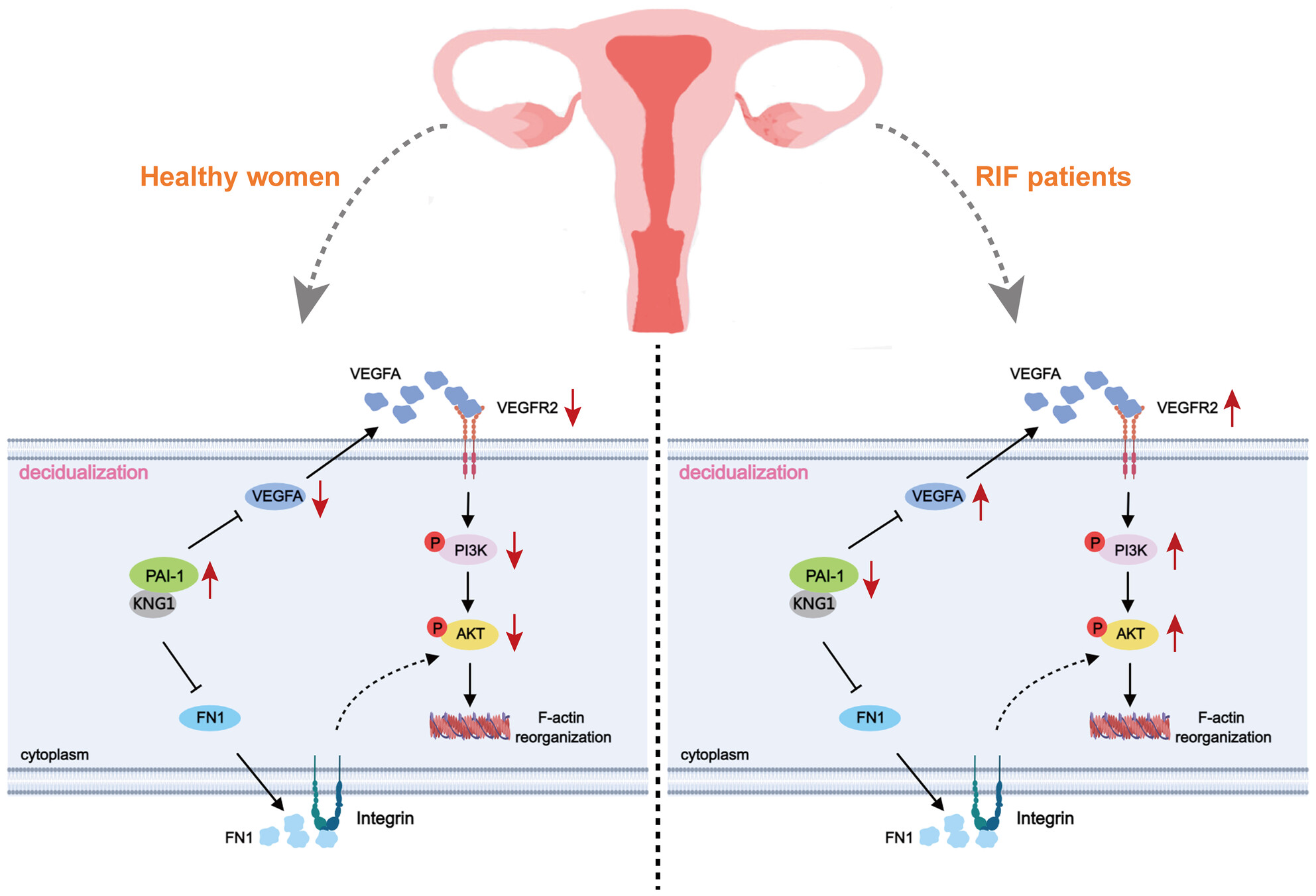
Fig1. Lower PAI-1 levels attenuate human stromal decidualization by upregulating VEGFR2/PI3K/AKT-mediated F-actin reorganization. (Huishan Zhao, 2024)
KNG1 Related Signaling Pathway
Kininogen-1 (KNG1) plays a role in pathways that help regulate blood pressure and inflammation. It’s part of the kinin-kallikrein system, which produces kinins. These kinins are important for widening blood vessels and managing how the body responds to inflammation. This is crucial for heart health, as it keeps blood flowing properly and prevents too much inflammation. When this system doesn’t work right, it can lead to high blood pressure or chronic inflammation. Researchers are looking at how KNG1 fits into these pathways, aiming to find new ways to treat heart and inflammation-related diseases by targeting this protein.KNG1 Related Diseases
The KNG1 gene has been studied in relation to various diseases due to its role in encoding the high molecular weight kininogen protein, which is crucial in several physiological pathways, including blood coagulation and inflammation. One of the notable conditions linked to KNG1 is hereditary angioedema, a disorder characterized by recurrent episodes of severe swelling. This condition can be life-threatening if it affects the airways. Besides hereditary angioedema, variations in the KNG1 gene have also been associated with an increased risk of thrombosis, which is the formation of blood clots within blood vessels, potentially leading to strokes or heart attacks. Recent studies are also exploring the gene's role in other inflammatory-related conditions, given its involvement in the kallikrein-kinin system. Understanding the genetic nuances of KNG1 can provide insights into personalized medical approaches, paving the way for targeted therapies.Bioapplications of KNG1
The KNG1 gene plays a crucial part in our health, especially when we look at medical applications. This gene is important because it helps control proteins related to blood flow and swelling. In the world of diagnostics, KNG1 can tell us a lot about someone's risk for certain health issues, like heart problems and angioedema, which is a kind of swelling condition. Understanding these risks early can be really helpful for doctors and patients in planning treatments. Besides that, KNG1 is also interesting for researchers looking into blood clots and healing. Since the gene influences how our blood clots and our body's response to injury, it's a potential target for new treatments that could help with healing wounds or controlling inflammation. By studying KNG1, scientists hope to develop more personalized medicine, tailored to individual genetic profiles.Case Study
Case Study 1: Zhang B. et al. EBioMedicine. 2023
Hepatitis B virus (HBV) can lead to liver cancer. A study with 300 Chinese families found that the SNP rs76438938 in the KNG1 gene can raise the risk of HBV. This SNP helps HBV by making KNG1 mRNA more stable, which weakens the immune response. Interestingly, the rs76438938-C version improves how well patients respond to IFN-α and IFN-λ1 treatments, potentially paving the way for better HBV treatment strategies.-
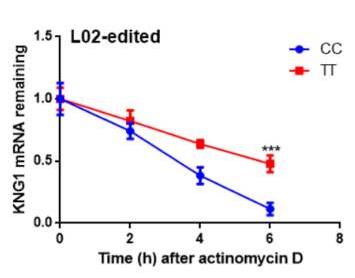 Fig1. Effect of rs76438938 on the KNG1 mRNA stability.
Fig1. Effect of rs76438938 on the KNG1 mRNA stability. -
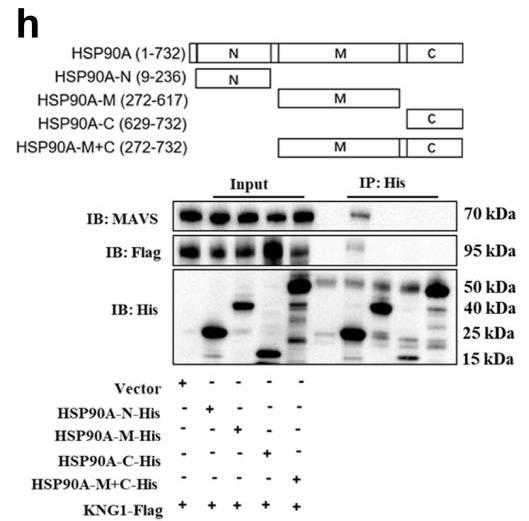 Fig2. Identification of HSP90A domain responsible for binding to MAVS and KNG1.
Fig2. Identification of HSP90A domain responsible for binding to MAVS and KNG1.
Case Study 2: Cheng X. et al. Biochem Biophys Res Commun. 2021
Doxorubicin (DOX) is a cancer drug with heart-damaging side effects. This study found that Kininogen-1 (KNG1) levels increase in heart tissues after DOX treatment, worsening oxidative stress and mitochondrial damage. By reducing KNG1, these harmful effects eased, and Nrf2, an antioxidant, helped protect the heart. This suggests targeting KNG1 might offer a way to reduce DOX's cardiotoxicity.-
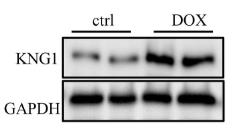 Fig3. KNG1 level in mice detected by Western blot.
Fig3. KNG1 level in mice detected by Western blot. -
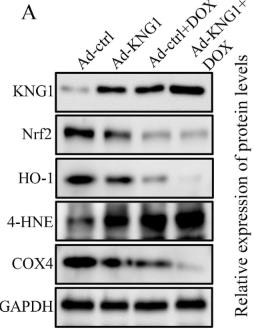 Fig4. Western blot analysis of KNG1, Nrf2, HO-1, 4-HNE, and COX4 in both groups.
Fig4. Western blot analysis of KNG1, Nrf2, HO-1, 4-HNE, and COX4 in both groups.
Quality Guarantee
High Purity
-
.jpg) Fig1. SDS-PAGE (KNG1-1818M)
Fig1. SDS-PAGE (KNG1-1818M) -
.jpg) Fig2. SDS-PAGE (KNG1-1819R)
Fig2. SDS-PAGE (KNG1-1819R)
Involved Pathway
KNG1 involved in several pathways and played different roles in them. We selected most pathways KNG1 participated on our site, such as Complement and coagulation cascades, which may be useful for your reference. Also, other proteins which involved in the same pathway with KNG1 were listed below. Creative BioMart supplied nearly all the proteins listed, you can search them on our site.
| Pathway Name | Pathway Related Protein |
|---|---|
| Complement and coagulation cascades | PLG,BDKRB1,C9,CD59A,F8,F13A1,F9,C3,C8A,CFD |
-
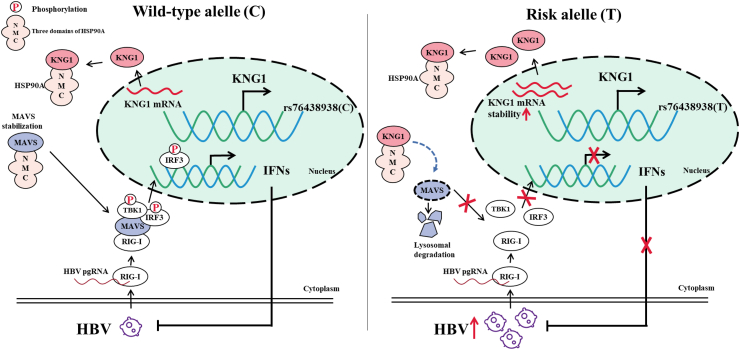 Fig1. Working model of rs76438938 in KNG1 regulation of HBV infection. (Bin Zhang, 2023)
Fig1. Working model of rs76438938 in KNG1 regulation of HBV infection. (Bin Zhang, 2023) -
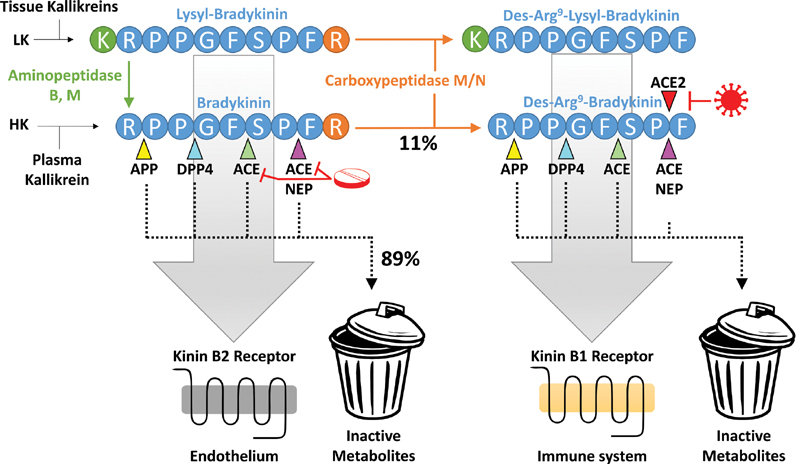 Fig2. Pathways of kinin production and degradation. (Steven de Maat, 2020)
Fig2. Pathways of kinin production and degradation. (Steven de Maat, 2020)
Protein Function
KNG1 has several biochemical functions, for example, cysteine-type endopeptidase inhibitor activity,heparin binding,protein binding. Some of the functions are cooperated with other proteins, some of the functions could acted by KNG1 itself. We selected most functions KNG1 had, and list some proteins which have the same functions with KNG1. You can find most of the proteins on our site.
| Function | Related Protein |
|---|---|
| cysteine-type endopeptidase inhibitor activity | BIRC7,SPOCK1,CSTA,CST6,CST2,CST3,CST11,NLRC4,PTTG1,STFA2 |
| zinc ion binding | ZZEF1,CA4B,TRIM35-30,PGLYRP6,CA3,ZMIZ1,MAP3K7IP3,MORC1,LONRF2,PPARD |
| receptor binding | FRK,P2RX7,AGRP,PVR,Ar,TNFSF12,GSDMA2,PTK2AA,IL28A,SERPINE1 |
| heparin binding | APP,CTGF,FGF9,OVALX,ADAMTS3,GM4980,COL25A1,SLIT1,ADAMTS8,CHRD |
| protein binding | FBXO27,CTPS2,SNX2,NFU1,FAM134C,ZBTB9,NGLY1,CTGF,SMC2,NASP |
Interacting Protein
KNG1 has direct interactions with proteins and molecules. Those interactions were detected by several methods such as yeast two hybrid, co-IP, pull-down and so on. We selected proteins and molecules interacted with KNG1 here. Most of them are supplied by our site. Hope this information will be useful for your research of KNG1.
Ance;C1QBP;F12;KLKB1;Lamc1;Lamb1;Lama1;Lama5;Lamb2;p29991-pro_0000037946;d-mannose
Resources
Research Area
Neurotransmitter Associated EnzymesCoagulation Cascade Protease Inhibitors
Kinin System
Plasmin/Plasminogen and Kallikrein/Kinin Systems
Related Services
Related Products
References
- Lieb, W; Chen, MH; et al. Genome-Wide Meta-Analyses of Plasma Renin Activity and Concentration Reveal Association With the Kininogen 1 and Prekallikrein Genes. CIRCULATION-CARDIOVASCULAR GENETICS 8:131-U278(2015).
- Bruzelius, M; Bottai, M; et al. Predicting venous thrombosis in women using a combination of genetic markers and clinical risk factors. JOURNAL OF THROMBOSIS AND HAEMOSTASIS 13:219-227(2015).



